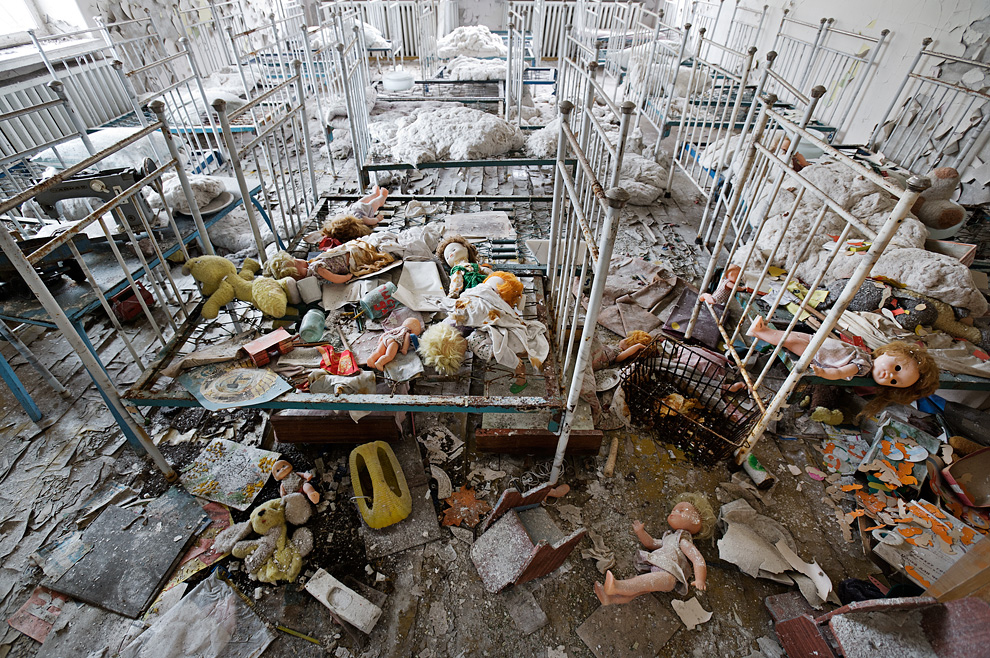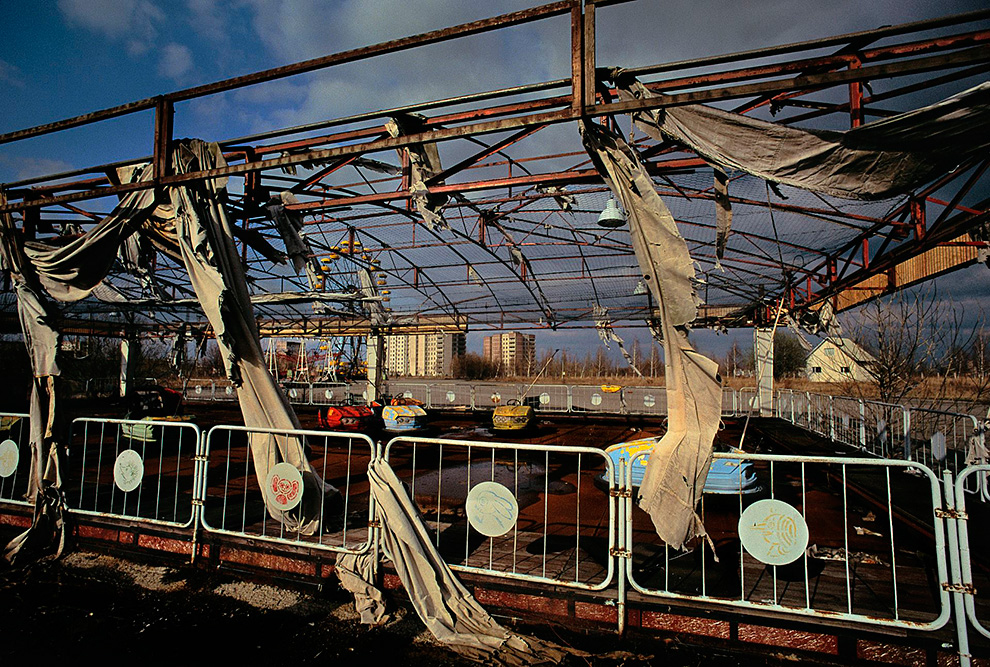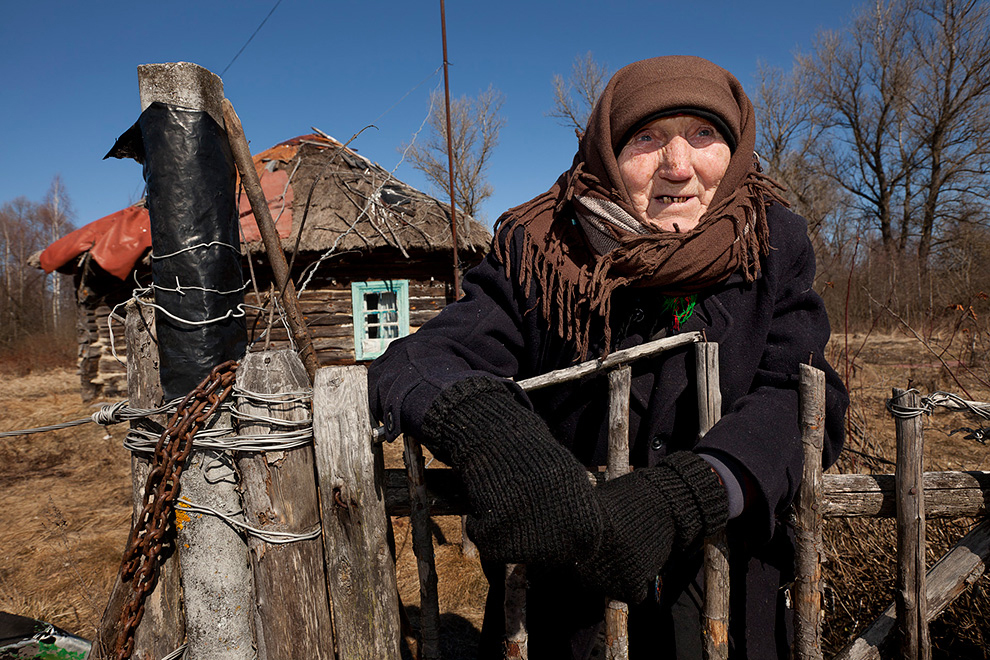I found this amazing photo sequence on boston.com




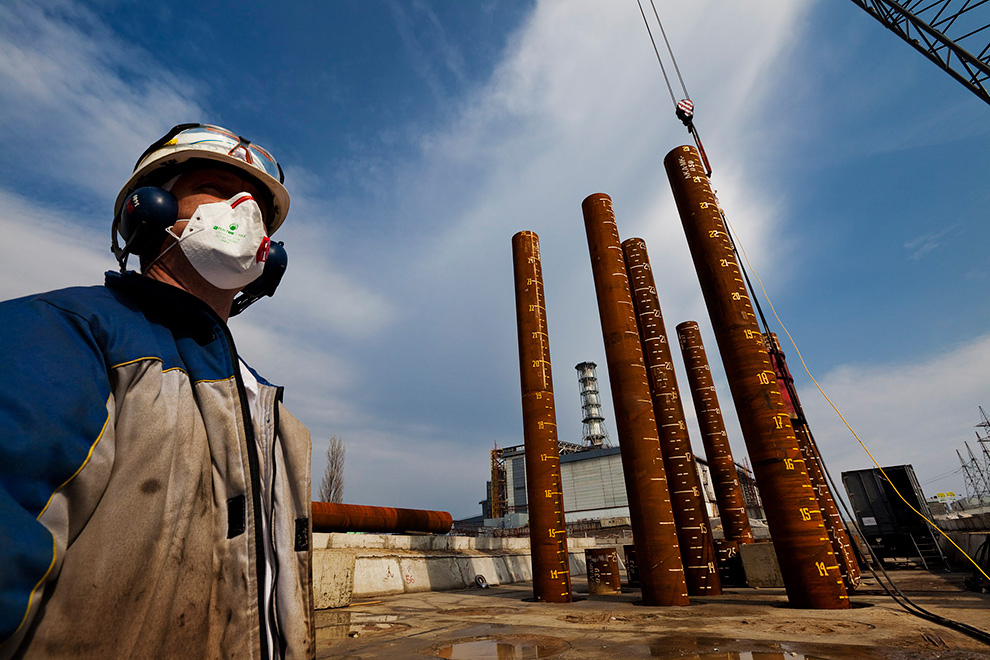


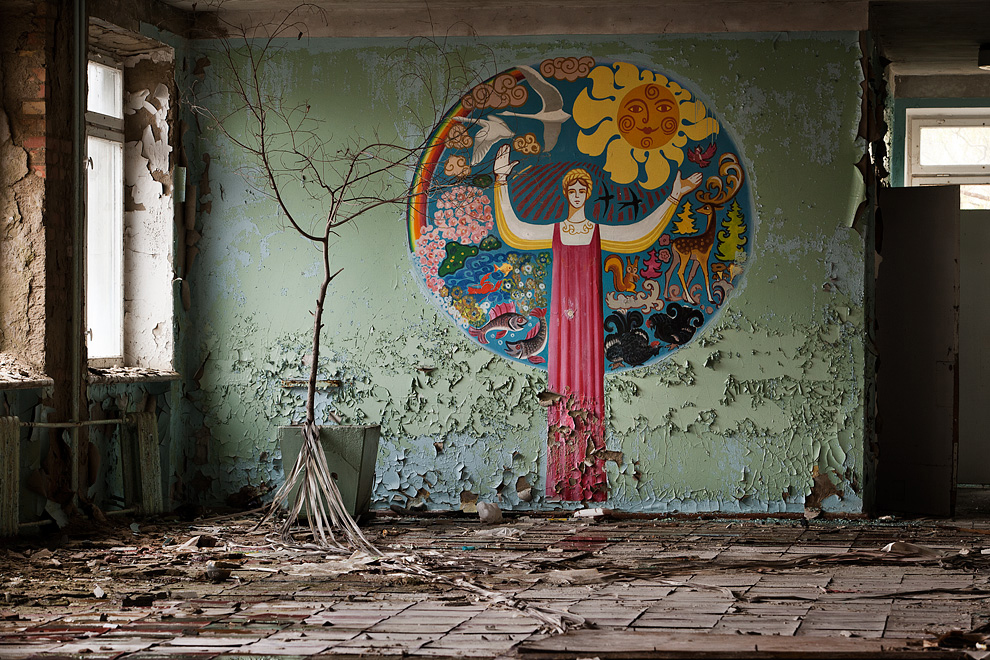
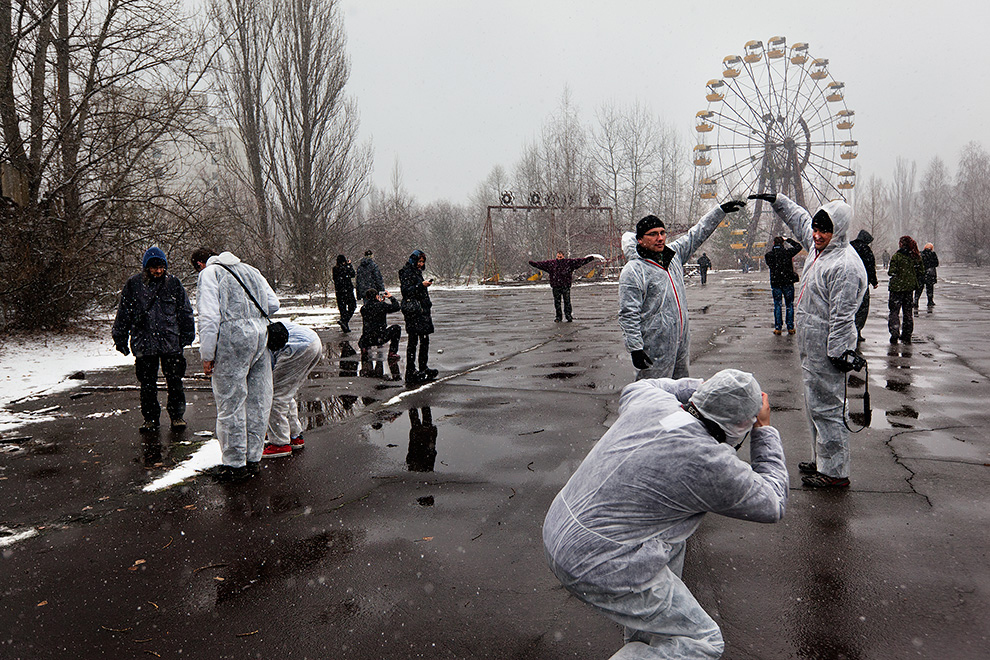
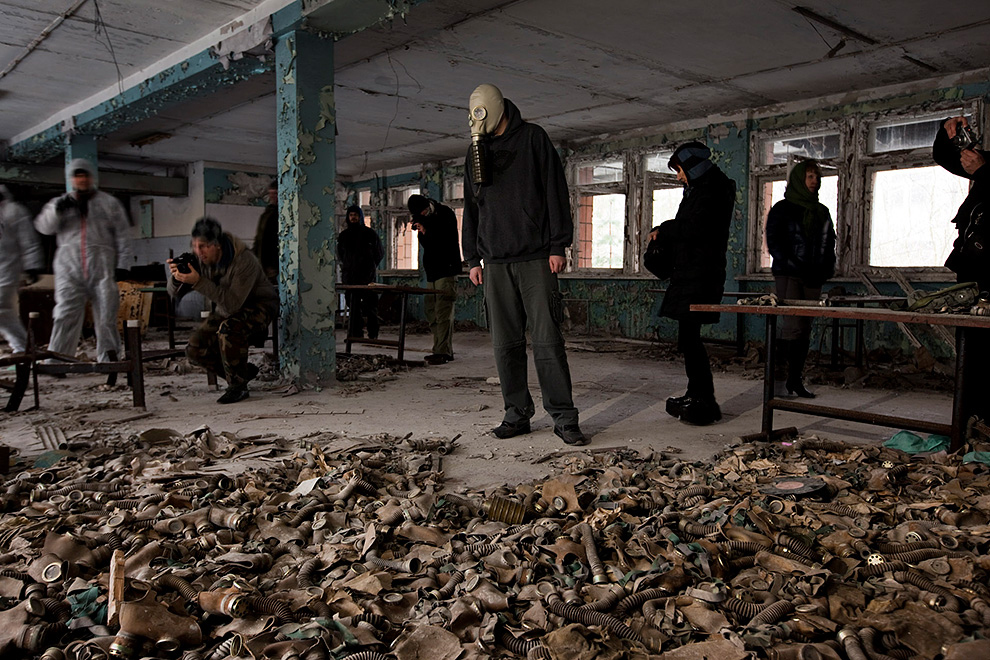



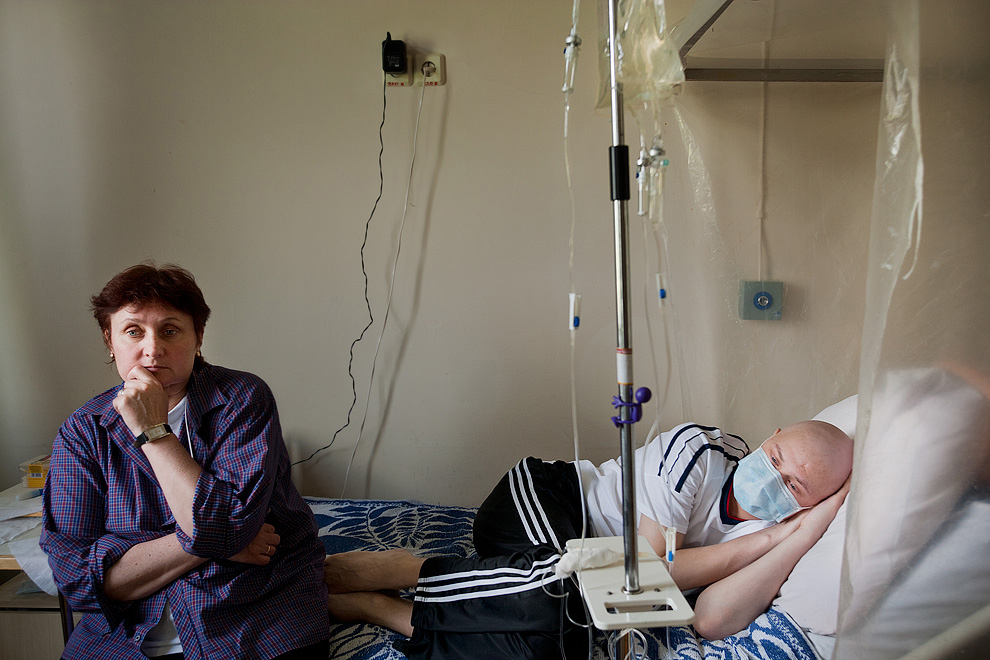
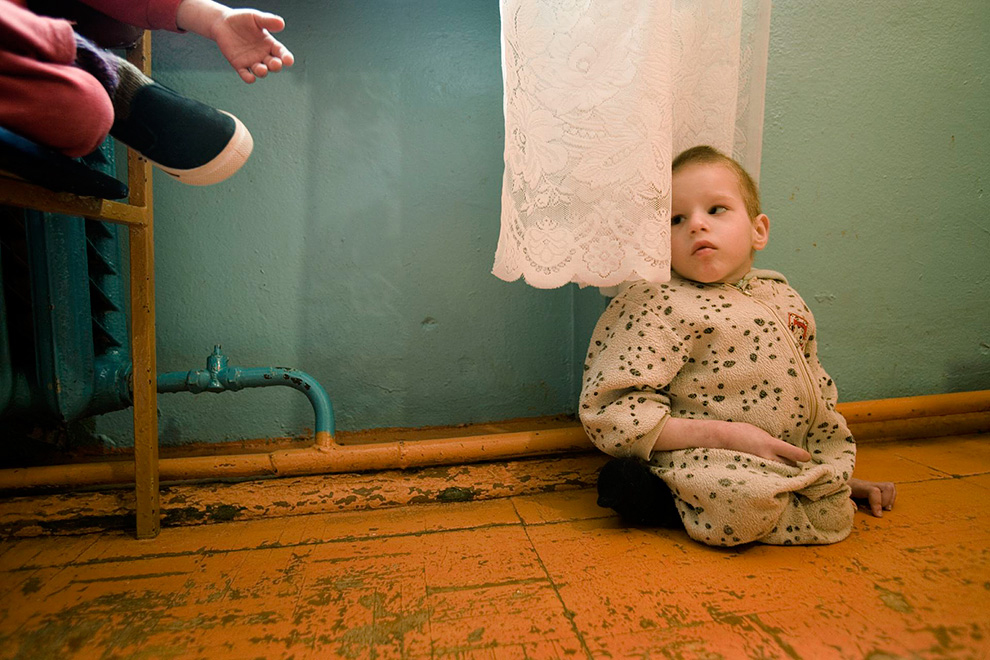
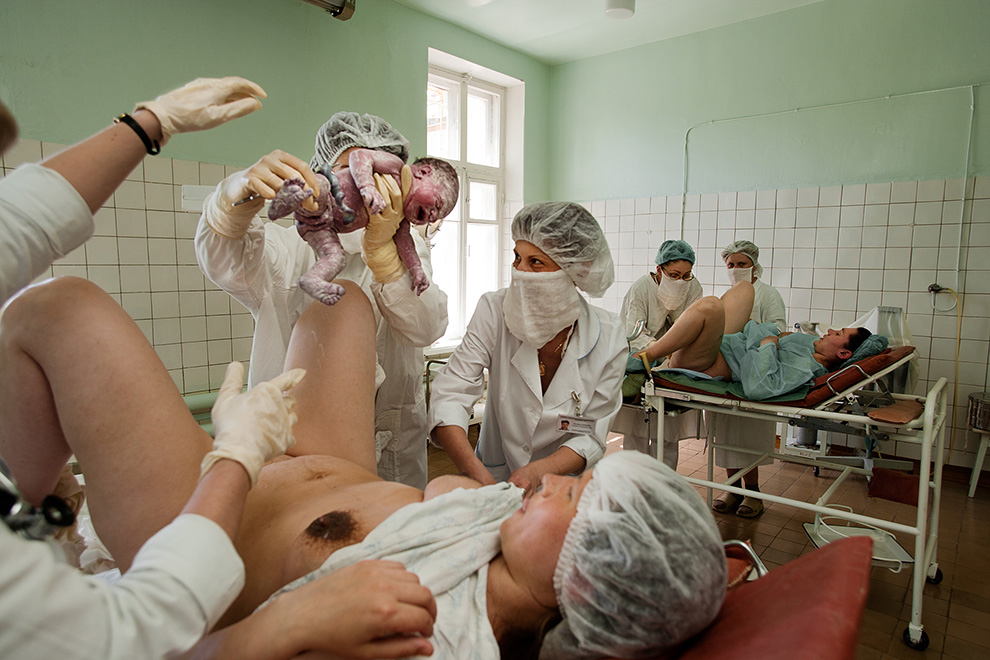
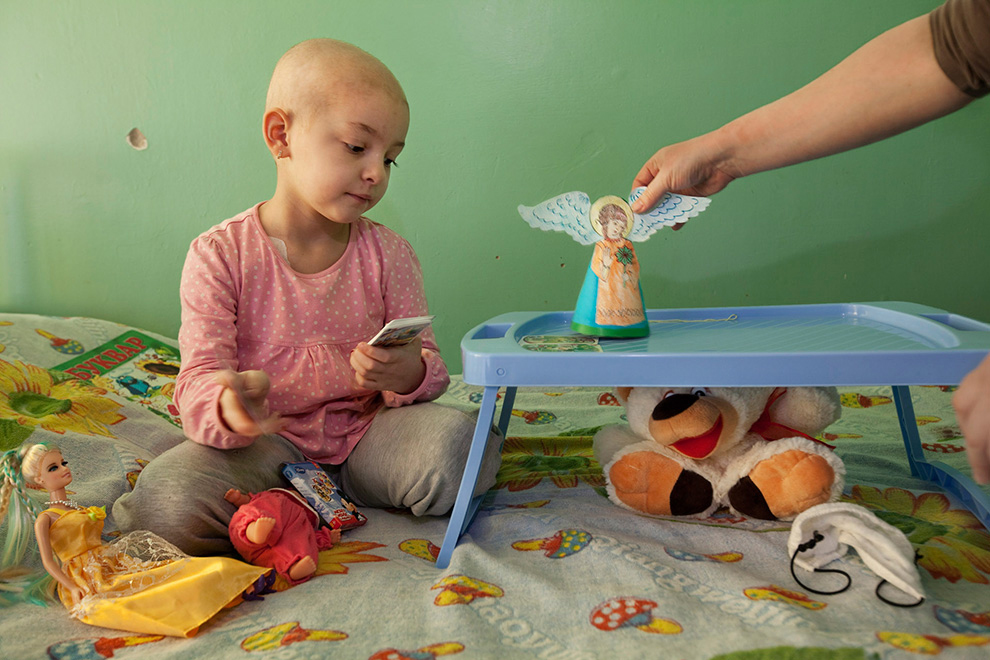
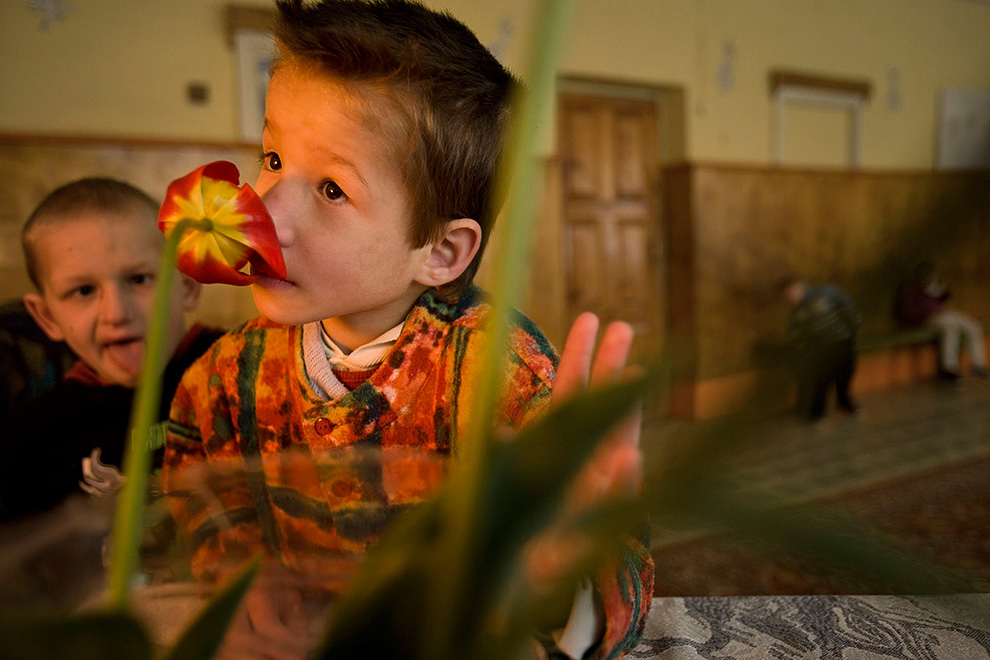


On
April 26, 1986, operators in this control room of reactor No. 4 at the
Chernobyl Nuclear Power Plant committed a fatal series of errors during a
safety test, triggering a reactor meltdown that resulted in the world's
largest nuclear accident to date. Today, the control room sits
abandoned and deadly radioactive. Chernobyl Nuclear Power Plant,
Ukraine, 2005 (Gerd Ludwig/INSTITUTE)

Workers,
wearing respirators and plastic suits for protection, pause briefly on
their way to drill holes for support rods inside the sarcophagus. It is
hazardous work: radiation is so high that they constantly need to
monitor their Geiger counters and dosimeters, and they are allowed only
one 15-minute stay in this space per day. Chernobyl Nuclear Power Plant,
Ukraine, 2005 (Gerd Ludwig/INSTITUTE)#

For
years desperate efforts were under way to shore up the roof of the
shelter to prevent it from collapsing. Inside the sarcophagus, dimly lit
tunnels lead to eerie rooms strewn with wires, pieces of shredded metal
and other debris. Walls have collapsed, and rubble is covered with
contaminated dust. The stabilization work has been completed, and today
the reactor’s interior sits untouched and deadly radioactive, waiting to
be dismantled. Chernobyl Nuclear Power Plant, Ukraine, 2011 (Gerd
Ludwig/INSTITUTE)#

Although
radiation levels only allowed for a few minutes of access, workers
initially had to pass over hazardous ladders to a section underneath the
melted core with life threatening contamination. To facilitate faster
access, a daunting hallway called the leaning staircase was erected.
Chernobyl Nuclear Power Plant, Ukraine, 2011 (Gerd Ludwig/INSTITUTE)#

Workers
near the sarcophagus expose themselves to hazardous levels of radiation
while building the New Safe Confinement, estimated to cost $2.2
billion. The arch-shaped, 29,000-ton metal structure, 105 meters high
and 257 meters wide, will slide over the existing structure to allow
demolition of the ailing shelter. To provide an indestructible base for
the new confinement, 396 enormous metal pipes are hammered 25 meters
deep into the ground. Chernobyl Nuclear Power Plant, Ukraine, 2011
(Gerd Ludwig/INSTITUTE)#

Built
in 1970 for the scientists and workers of the Chernobyl Nuclear Power
Plant, the city of Pripyat, located less than 3 km from the reactor, was
once inhabited by nearly 50,000 residents and brimming with life.
Authorities did not immediately warn residents of the accident and
ordered the evacuation a full 36 hours after the explosion. Pripyat,
Ukraine, 1993 (Gerd Ludwig/INSTITUTE)#

When
Soviet authorities finally ordered the evacuation, the residents’ hasty
departure often meant leaving behind their most personal belongings.
The Soviet Union only admitted to the world that an accident had
occurred three days after the explosion, when the nuclear cloud reached
Sweden and scientists there noticed radiation on their shoes before
entering their facility. Opachichi, Ukraine, 1993 (Gerd
Ludwig/INSTITUTE)#

Nineteen
years after the accident, the empty schools and kindergarten rooms in
Pripyat - once the largest town in the Exclusion Zone with 50,000
inhabitants—remain a silent testament to the sudden and tragic
departure. Due to decay, this section of the school building has since
collapsed. Pripyat, Ukraine, 2005 (Gerd Ludwig/INSTITUTE)#

On
April 26, 1986, this amusement park in Pripyat with bumper cars and a
Ferris wheel was being readied for the annual May Day celebrations when
the nearby reactor blew up. Rotting away for 25 years, it has since
become a symbol of the utter abandonment of the area. Now it is an
attraction for tourists who have started flocking to the zone in droves.
Pripyat, Ukraine, 2011 (Gerd Ludwig/INSTITUTE)#

In
2011, the Ukrainian government officially legalized tourism in the
Exclusion Zone. In Pripyat, visitors get to wander through the
debris-strewn corridors and empty classrooms of a school. Hundreds of
discarded gas masks litter the floor of the canteen. One tourist brought
his own gas mask—not to protect himself from the radiation but simply
for photographs and giggles. Pripyat, Ukraine, 2011 (Gerd
Ludwig/INSTITUTE)#

The
nuclear accident contaminated tens of thousands of square kilometers,
forcing 150,000 people within a 30 km radius to hastily leave their
homes. Today, nearly all the small wooden houses in the scattered
villages within the Exclusion Zone are abandoned, and nature slowly
takes over these remnants of civilization. Korogod, Ukraine, 2005
(Gerd Ludwig/INSTITUTE)#

Homegrown
tomatoes are washed in the sink at the home of deaf couple Ivan
Martynenko, 77, and Gapa Semenenko, 82. After the evacuation, a few
hundred elderly evacuees subsequently returned to their former homes,
subsisting mostly on produce grown on contaminated soil. Ilyintsy,
Ukraine, 2005 (Gerd Ludwig/INSTITUTE)#

Suffering
from thyroid cancer, Oleg Shapiro, 54, and Dima Bogdanovich, 13,
receive care at a thyroid hospital in Minsk, where surgery is performed
daily. As a liquidator, Oleg was exposed to extreme levels of radiation.
This was his third thyroid operation. Dima's mother claims that
Chernobyl’s nuclear fallout is responsible for her son’s cancer, but his
doctors are more cautious; Belarusian officials are often instructed to
downplay the severity of the radiation. Minsk, Belarus, 2005 (Gerd
Ludwig/INSTITUTE)#

As
his mother worries, Dima Pyko, 16, receives treatment as a lymphoma
patient at the Children’s Cancer Center (Oncology and Hematology Center)
in Lesnoy near Minsk. The facility was built with much financial
support from Austria as a direct result of cancers occurring in the
fallout regions in Belarus after the Chernobyl accident. Lesnoy,
Belarus, 2005 (Gerd Ludwig/INSTITUTE)#

Severely
physically and mentally handicapped, 5-year-old Igor was given up by
his parents and now lives at a children’s mental asylum, which cares for
150 abandoned and orphaned children with disabilities. It is one of
several such facilities in rural southern Belarus receiving support from
Chernobyl Children International, an aid organization established by
Adi Roche in 1991 in the aftermath of the world’s worst nuclear
disaster. Vesnova, Belarus, 2005 (Gerd Ludwig/INSTITUTE)#

In
the days, weeks and months after the Chernobyl accident, strong winds
pushed the radiation released by the explosion northwest into the Gomel
region of Belarus, contaminating thousands of square kilometers with the
radioactive fallout. Today, girls born around the time of the accident
are having children of their own. Many find themselves anxious about the
contamination and what it might have done to their reproductive organs
and genes. Gomel, Belarus, 2005 (Gerd Ludwig/INSTITUTE)#

Only
5 years old and suffering from leukemia, Veronika Chechet is
hospitalized at the Center for Radiation Medicine in Kiev. Her mother,
Yelena Medeyeva, 29, was born four years before the Chernobyl accident
in nearby Chernigov, a city heavily affected by nuclear fallout.
According to doctors at the hospital, many patients’ conditions are a
direct result of the radioactivity released after the accident. Kiev,
Ukraine, 2011 (Gerd Ludwig/INSTITUTE)#

In
an orphanage in Belarus, a mentally disabled boy enjoys the scent of a
tulip. Children born in the fallout region are said to have a higher
rate of birth defects and retardation, a belief supported by many—but
not all—in the scientific community. International aid organizations
established in the aftermath of the disaster continue to provide much
needed financial support to homes and orphanages housing children
affected by the fallout. Vesnova, Belarus, 2005 (Gerd Ludwig/INSTITUTE)#

Each
year on April 26 in a midnight vigil at the Monument to the Firemen,
shift workers in Chernobyl honor those killed by the explosion. Two
plant workers died immediately in the blast, and another 28 workers and
firemen soon succumbed to radiation poisoning. Thousands more have since
died of cancer and the social upheaval caused by mass relocation.
Chernobyl, Ukraine, 2005 (Gerd Ludwig/INSTITUTE)#

